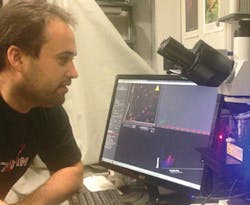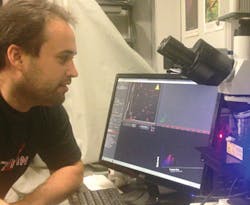ONCOLOGY/INSTRUMENTATION: Laser-enabled nanoparticle quantification aids metastasis research
The ability to quantify exosomes—nanoparticles secreted by tumor cells—is important for the work of researchers at Weill Cornell Medical College (New York, NY) studying cancer metastasis. But until recently, the scientists were able to make qualitative analyses only. Now, thanks to light-based nanoparticle tracking analysis (NTA), they can analyze millions of exosomes, one by one, and in just minutes learn not only numbers but also population distribution.
Although NTA's size measurement is not as accurate as that offered by electron microscopy—their only other option—the approach allows the researchers to quickly process large numbers of samples, which electron microscopy does not.
"In our laboratory, we are interested in analyzing the role of tumor-secreted exosomes in metastasis," explained Hector Peinado Selgas, assistant professor of Molecular Biology in Pediatrics.1 "We have recently published a study describing how exosomes secreted from melanoma tumor cells are educating bone marrow-derived progenitor cells toward a pro-metastatic phenotype. We are also interested in analyzing the use of exosomes as biomarkers of specific tumor types and their use as prognostic factors, on which Cornell University currently has pending patents."
According to instrumentation maker NanoSight, NTA is unique in allowing direct, individual visualization and counting of specific exosomes in liquid suspension in real time: Laser light illuminates the particles, and a video camera captures the scattering. Circulating levels of exosomes are found to be elevated in various disorders, including cancer, atherosclerosis and coronary artery disease, hematological and inflammatory diseases, and diabetes.
1. H. Peinado et al., Nat. Med., 18, 883-891 (2012).

